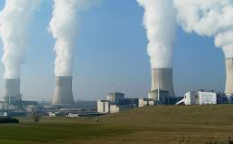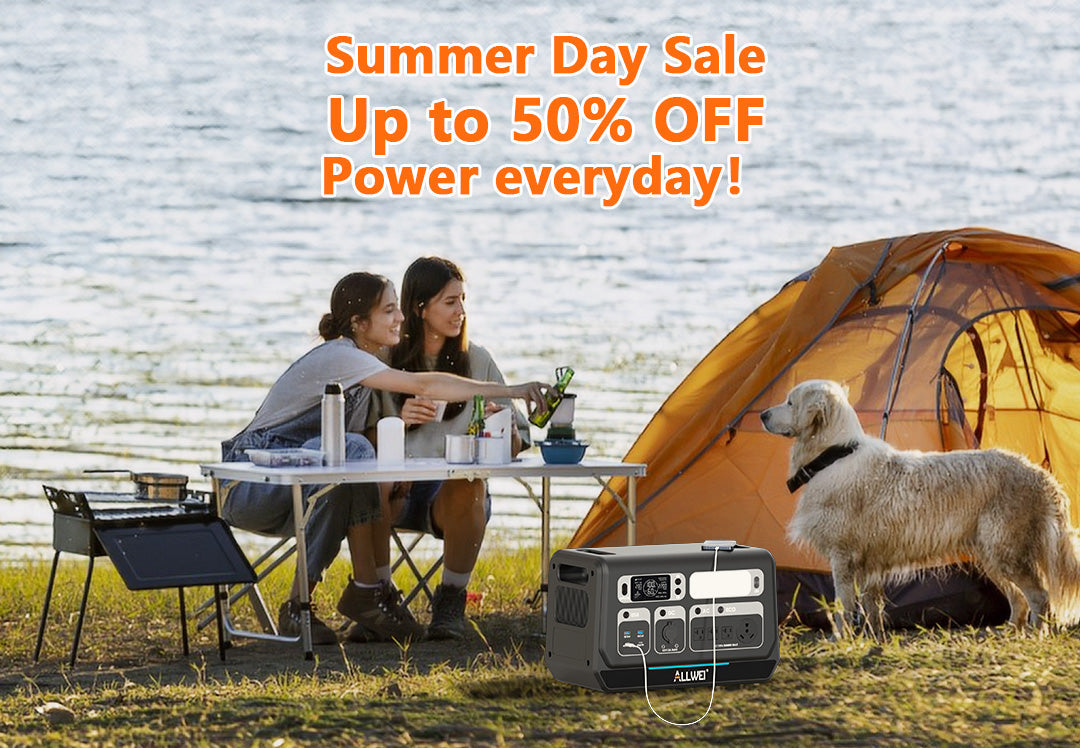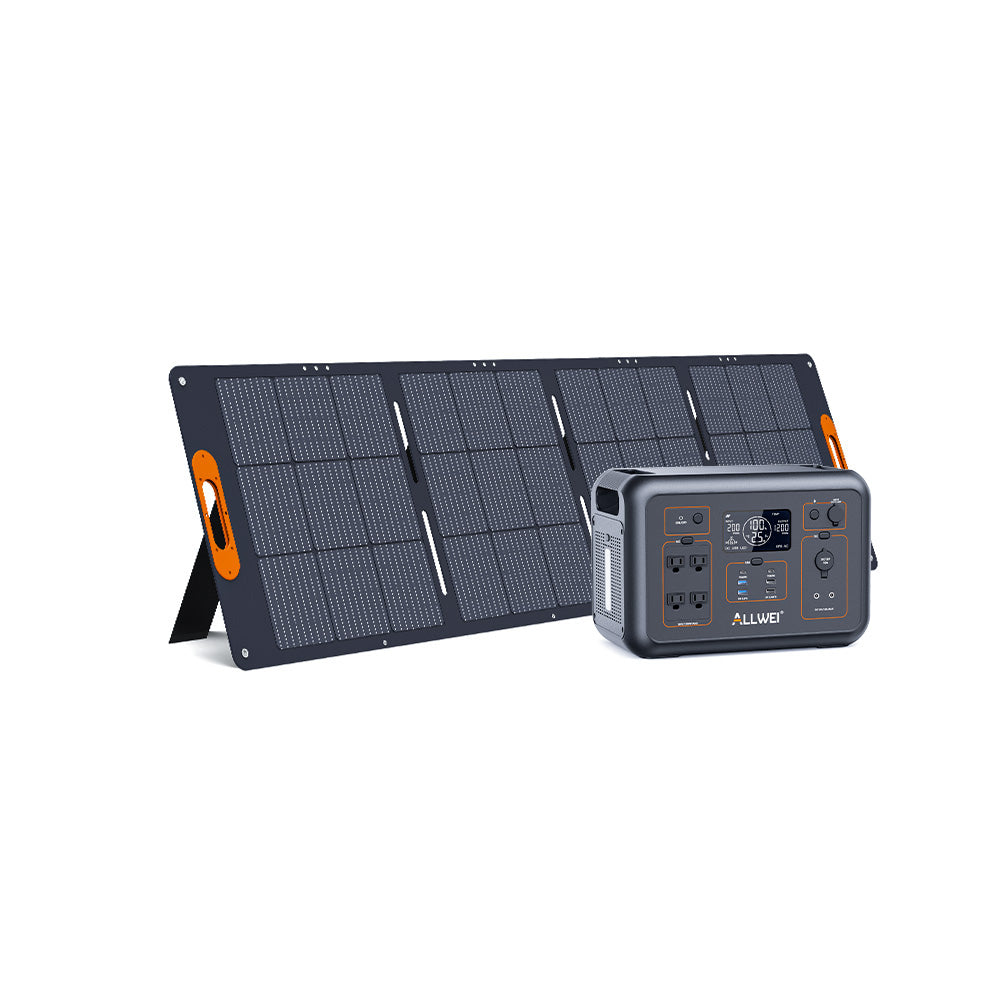When people hear the term “atomic power station”, it often sparks both fascination and concern. Nuclear energy has played a significant role in the world’s electricity production for decades, but it also comes with questions about safety, cost, and sustainability. In this article, we will answer the question what is an atomic power station, explore how it works, and also consider alternative power solutions—like portable and balcony power stations from ALLWEI—that bring energy generation closer to everyday life.
Defining an Atomic Power Station
An atomic power station, also called a nuclear power plant, is a facility where heat generated from nuclear fission is used to produce electricity. Unlike fossil fuel plants that burn coal, oil, or gas, an atomic power station relies on splitting atoms—usually uranium or plutonium—to release enormous amounts of energy.
This heat is used to convert water into steam, which then drives turbines connected to generators. The process is highly efficient and produces electricity on a large scale without emitting greenhouse gases during operation. That is why nuclear energy is often promoted as a low-carbon energy source.
How Does an Atomic Power Station Work?
Nuclear Reactor – At the heart of the station lies the reactor, where uranium fuel rods undergo controlled fission reactions.
Heat Transfer – The energy from fission heats water or another coolant.
Steam Generation – The heated coolant transfers energy to water, creating high-pressure steam.
Turbine and Generator – Steam spins turbines, which in turn drive generators to produce electricity.
Cooling System – After passing through the turbine, steam is cooled back into water and recycled.
This closed-loop process allows atomic power stations to run continuously for long periods, often providing baseload power to national grids.
Advantages of Atomic Power Stations
High Output: A single nuclear plant can generate enough electricity to power millions of homes.
Low Carbon Emissions: Compared with coal or oil, nuclear energy contributes far less to global warming.
Energy Security: Many countries rely on nuclear power to reduce dependence on imported fossil fuels.
Challenges of Atomic Power
While atomic power stations bring many benefits, they are not without challenges:
Safety Concerns: Accidents like Chernobyl (1986) and Fukushima (2011) highlight the risks.
Radioactive Waste: Spent fuel remains hazardous for thousands of years and requires secure storage.
High Costs: Building and decommissioning nuclear plants require massive investment.
Limited Flexibility: Nuclear plants are designed for continuous output, not on-demand flexibility.
These issues explain why many governments are looking at renewable energy and decentralized power solutions to complement or replace nuclear power.
Modern Alternatives: Decentralized Power Solutions
Today, people are increasingly interested in producing and storing energy locally. Instead of depending entirely on centralized facilities like atomic power stations, households and small businesses are turning to solar panels, balcony power plants, and portable power stations.
This is where ALLWEI comes in. As a brand committed to sustainable, user-friendly energy solutions, ALLWEI designs portable power stations and balcony solar systems that allow anyone to generate and store clean electricity at home or on the go.
Why ALLWEI?
Efficiency and Flexibility: Unlike nuclear plants that are tied to grids, ALLWEI’s portable power stations provide instant electricity anywhere—whether camping, traveling, or during power outages.
Scalability: ALLWEI’s balcony power plants can be expanded with additional battery storage, offering households a mini “power station” that reduces monthly electricity bills.
Eco-Friendly: 100% renewable energy when paired with solar panels.
Safety First: Advanced battery management systems protect against overcharging, overheating, and deep discharge.
Comparing Atomic Power and Portable Power
| Feature | Atomic Power Station | ALLWEI Portable Power / Balcony Plant |
| Scale | Gigawatts (powering millions) | Kilowatts (for households & outdoor) |
| Carbon Emissions | Very low | Zero with solar input |
| Safety Risks | High (nuclear accidents, waste) | Very low (safe battery tech) |
| Flexibility | Fixed, centralized | Mobile, decentralized |
| Investment | Billions in infrastructure | Affordable for individuals |
While nuclear energy might power nations, portable and balcony solutions like ALLWEI empower individuals.
The Future of Energy: Balance Between Large and Small
The question “what is an atomic power station” leads us to think about the bigger picture of energy. Large-scale nuclear power may continue to play a role in providing low-carbon electricity, but the global trend is clear: distributed, renewable, and user-controlled energy is the future.
Imagine a world where every household has its own clean energy backup, reducing dependency on giant facilities. ALLWEI is actively shaping that vision by offering advanced portable stations and balcony solutions. Whether you want to reduce your electricity bills, prepare for emergencies, or enjoy outdoor adventures, ALLWEI gives you the freedom to power your life sustainably.
Conclusion
An atomic power station is a large-scale facility that uses nuclear fission to generate electricity. While it remains a powerful tool in the global energy mix, it also brings challenges such as safety concerns and waste management.
For individuals and households, there’s no need to wait for centralized solutions. With brands like ALLWEI, you can harness solar energy, store it efficiently, and enjoy reliable electricity wherever you are.
So the next time you wonder what is an atomic power station, remember: while nuclear energy powers nations, ALLWEI empowers you.




Leave a comment
This site is protected by hCaptcha and the hCaptcha Privacy Policy and Terms of Service apply.